Here's What Nobody Tells You About Buying and Renovating a Historic Home
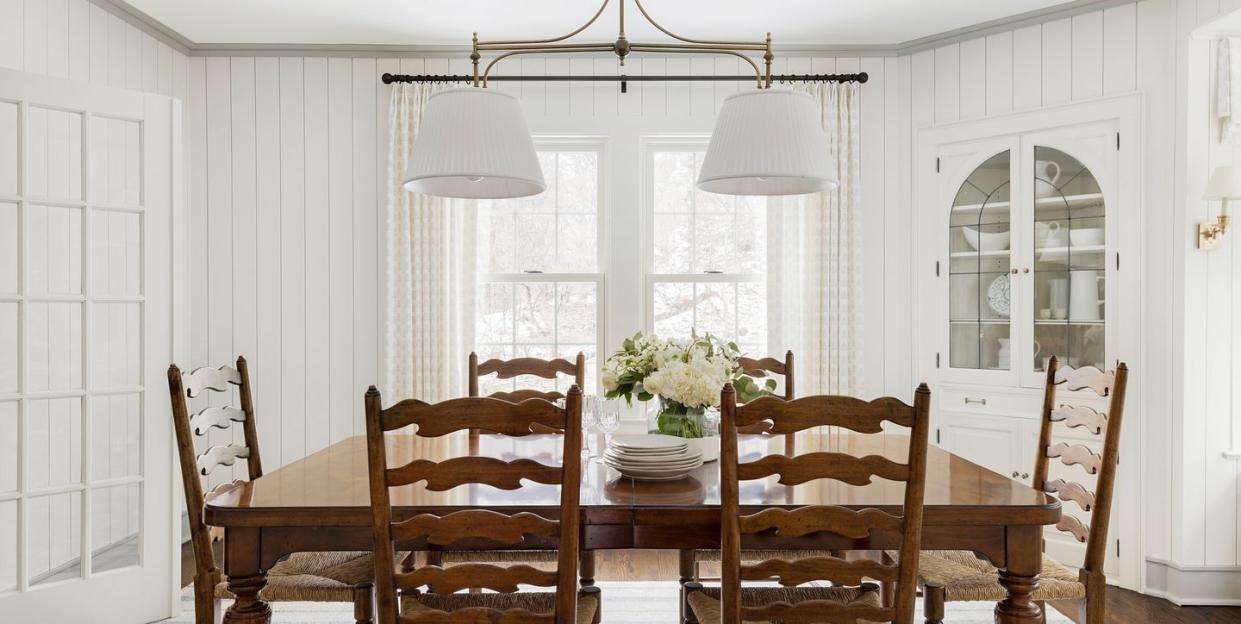
- Oops!Something went wrong.Please try again later.
While current architectural trends tend to lean towards convenient, streamlined structures that prioritize technology, there's something to be said about historic homes. After all, the artistry and attention to hand-crafted detail they showcase are hard to come by in new builds. That said, buying and renovating an 80-plus-year-old space is a big commitment—both financially and emotionally. We chatted with five homeowners who chose history over modernity to discover if such an investment is actually worth it.
Here's what they said.
The Frank Lloyd Wright Original
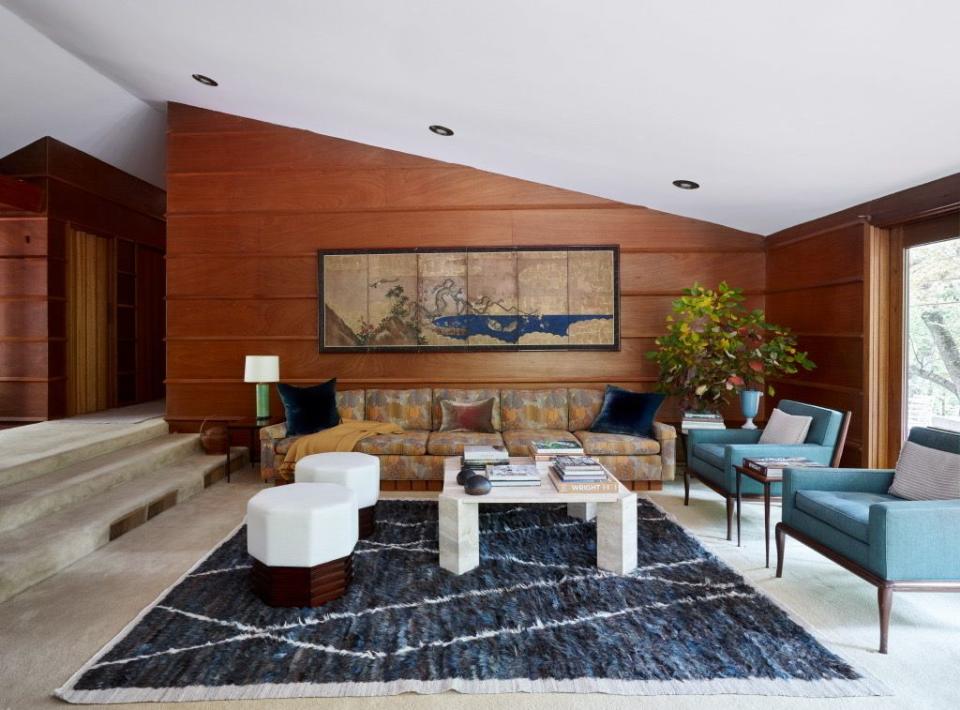
Location: Piermont, New York
Year Built: 1959
In 2014, when Sarah Magness, founder of her eponymous New York City interior design firm, purchased a historic home—built by Frank Lloyd Wright in 1959— she had her work cut out for her. Now, after nearly a decade of living in her dream house, she says, "[The renovation] is ongoing. A historic house requires love and attention every day!" Her house, in particular, demanded some TLC that she was more than happy to take on. "It was a full restoration," says the mother of a young daughter and a Cardigan Welsh Corgi named Amsterdam.
"I did not change any of the detailing or design of the house," she says, mindful that she has a architectural gem on her hands. Instead, "I restored and maintained the original millwork, painting, plaster, concrete, linoleum, and tile." Most of the contemporary moments come into play with the furnishings, which connect the historic 20th-century architecture to the present day.
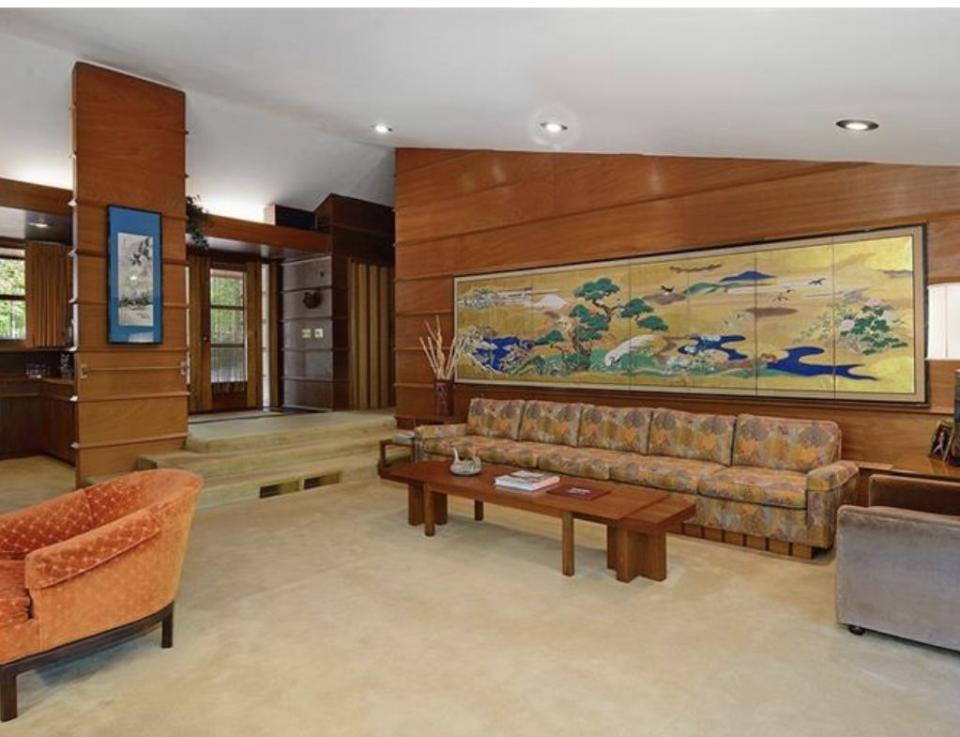
Pros: "The pros are that as a proprietor of the house, I know it's important to maintain its mark on history," Magness notes. "I am the caretaker of a home designed by a legendary American architect." Another pro was a shock that she happened upon unexpectedly: "The best surprise wasn't in the house itself but on the drawings. There were field notes by the project architect from Wright's office to make alterations and modifications to the house design, which was a special artifact to discover."
Cons: Even in a showplace, some of the decades-old building materials won't always hold up. "I had to completely replace the plaster ceilings," Magness admits. "That was a dusty and time-consuming experience. It was also an endeavor for the plaster restorer, as it's difficult to work on an angled ceiling."
Worth it? Magness says, "Yes, it's worth all the time, effort, and cost! It is crucial to maintain the original design intent and continue the legacy of the builder, owner, and architect."
The Beachy Bungalow
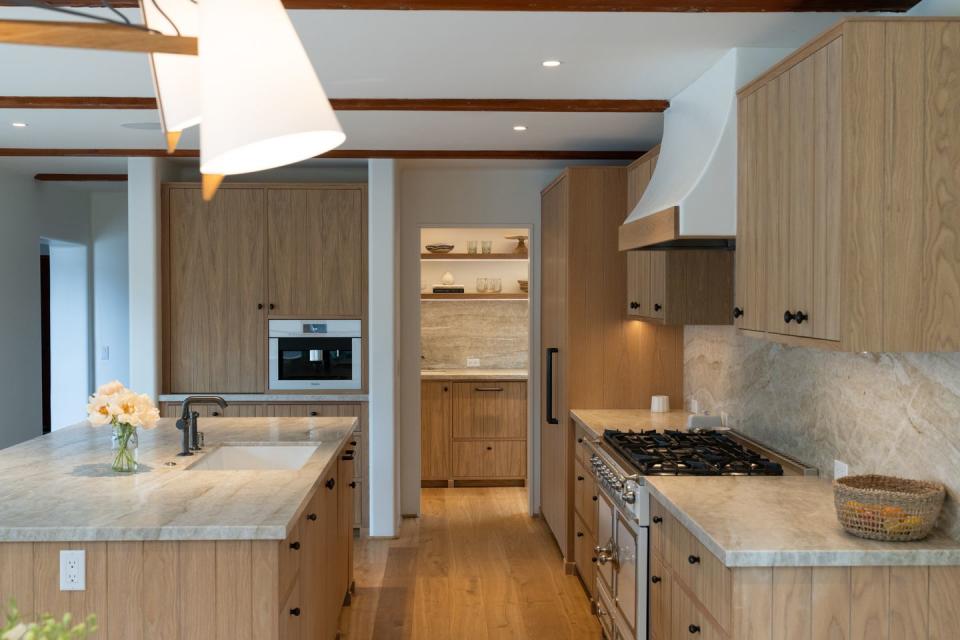
Location: Coronado, California
Year Built: 1936
As is the case with many architectural overhauls, John and Mandy McCauley's gut renovation of a circa 1936 residence went a tad over budget—about twice as much as the original estimate, Mandy admits. Perhaps that's because the couple was working with several buildings: the main historical residence, where they completely redid the kitchen and bathrooms, and a 1970s back house that they extensively remodeled. "We tried to stay true to the original Cliff May house, as it was worth preserving, but it was in real need of renovation—especially when it came to the plumbing, electric systems, HVAC, kitchen, and bathrooms," Mandy says. "We think we struck a really nice balance between honoring the past while modernizing the house."
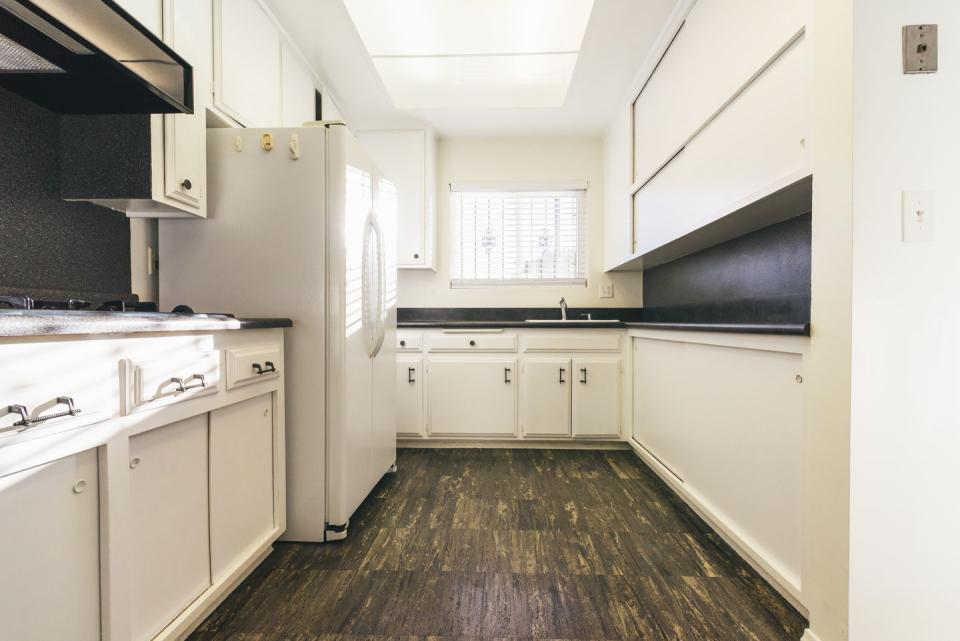
She credits the success of the project to the experts she brought on to take the reins, architect: Christian Rice, landscaper ORCA, and interior designer Gordana. In the end, Mandy says, "Our new house is now perfect for our lifestyle, optimizes outdoor space, and is great for hosting others."
Pros: "We were lucky to work with the team we pulled together. I cannot recommend these people more. They are extremely talented," she adds.
Cons: "We lived in the house while we did all of the renovations, which was harder than we ever expected," Mandy admits. "Living in a construction site was brutal and. COVID really impacted the timing of this project. At times, this was very frustrating." And, of course, there's the fact that she and her husband also spent nearly double their original budget.
Worth it? "Absolutely! We believe in preserving both historic homes and the character of a local community," Mandy explains. "This house is unique in so many ways, from the 100-year-old Douglas fir to the tiled floors. There is no way we'd be as happy with a brand new build."
The Cozy Upstate Retreat
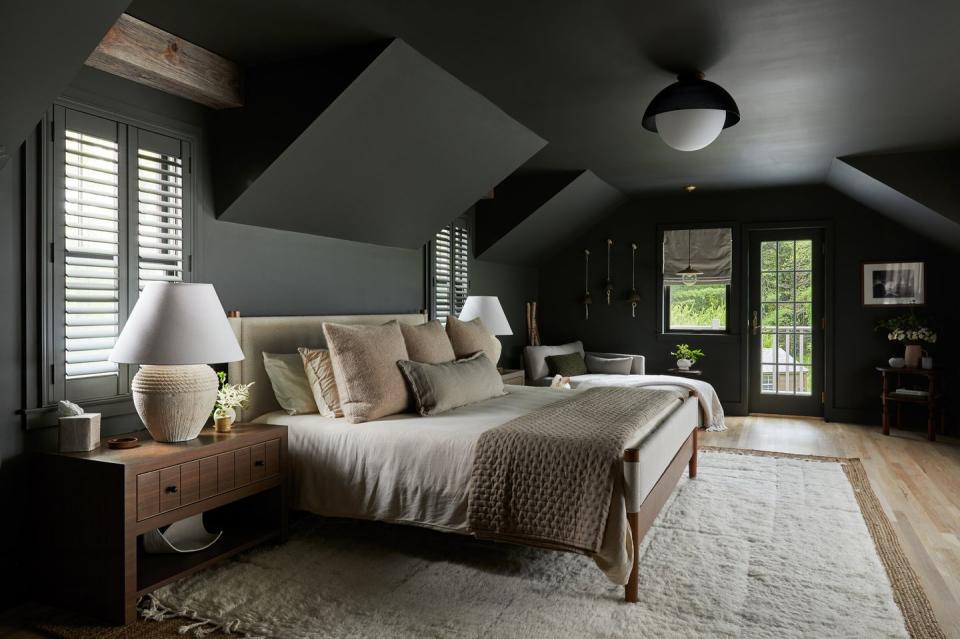
Location: Mamakating, New York
Year Built: 1940
Co-founder and creative director of her namesake interior design firm Becky Shea and her husband Jake, the firm’s co-founder, COO, and photographer, bought their cozy two-bedroom home—built in 1940—in December 2020. She notes, "We consider ourselves incredibly fortunate to have acquired a home that was exceptionally well-maintained by its previous owners. Their diligent care ensured that the house was in excellent shape, and our subsequent renovations were primarily driven by personal aesthetic preferences."
Shea, whose work is often inspired by a home's original architectural bones and its surrounding natural landscape, was keen on preserving as many of the mid-20th-century details as possible, including the floors. "Recognizing their beauty and timeless appeal, we decided to keep them intact," she says. Other spaces, however, got the full treatment. "We gutted the mudroom, completely stripping it down to its bare bones. This provided a blank canvas for us to reimagine the space according to our vision," Shea says.
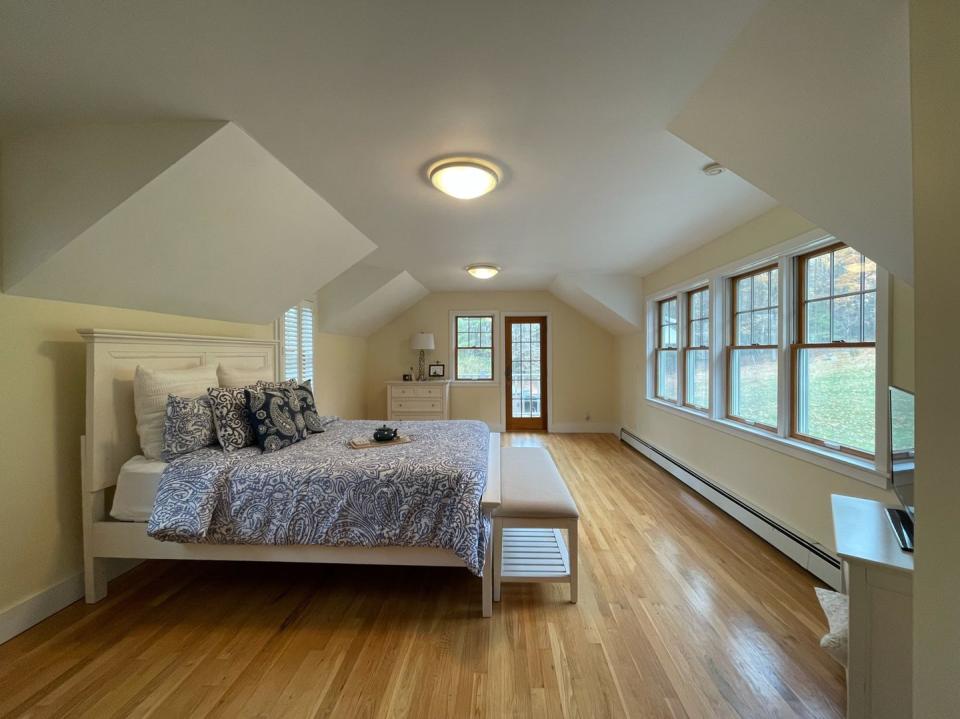
"We took on a comprehensive painting project, covering every room in the house, and to add character and a touch of charm, we installed shiplap in the lofted rooms," Shea shares. She also incorporated reclaimed beams onto the ceilings, added cedar shiplap to a kitchen-adjacent nook, and modernized the electrical plan, updating all of the fixtures throughout the whole home.
Pros: During their search for a place, "this particular house stood out among the rest, offering the most land and the largest square footage at a surprisingly affordable price," Shea says. "Our home met all our criteria, combining space, affordability, and a location that allowed for more regular visits into Manhattan. The waiting, the failed bids, and the long commutes were all worth it in the end. We now enjoy the benefits of this property on a weekly basis!" In addition to the lucky find of the home itself, the creative couple didn't encounter any of the unpleasant surprises that often come with old homes, such as mold and termites. Lastly, Shea says, "Being in the industry and knowing exactly what we wanted to achieve aesthetically made it very easy to communicate effectively with the team so that they could execute in a timely fashion."
Cons: "Following the completion of our extensive overhaul and the joy of finally settling into our renovated home, we faced an unforeseen and significant setback nine months after the renovation was complete," Shea says. "Our pipes froze during a cold spell, resulting in a devastating flood that affected not only our bedroom but also the guest bedroom, mudroom, and part of the kitchen." Though such catastrophic events can unfold in any cold-weather home, older ones are more prone to such mishaps.
Worth it? "Renovating historic homes has always been an incredibly enjoyable experience for me," Shea says. "I firmly believe that embracing and preserving history is an essential aspect of life as a whole. The cultural significance and architectural beauty of historic structures should be cherished and safeguarded." In other words, yes, the sometimes painful process was worth it.
The Turn-of-the-Century Lake House
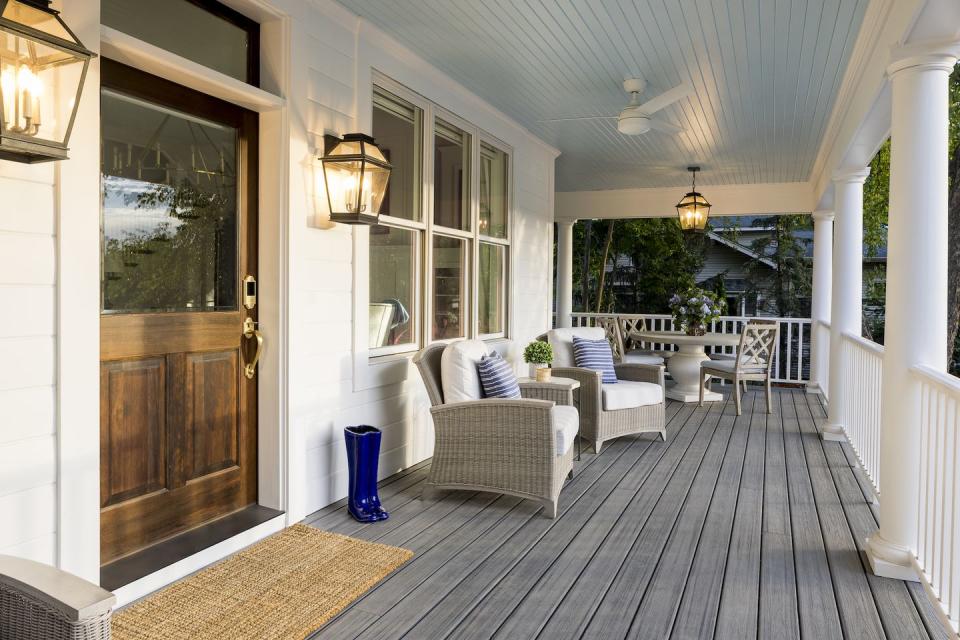
Location: McHenry, Illinois
Year Built: 1901
"In the early days of COVID-19, [my husband, our daughters, and I] were starting to feel very trapped in Chicago because our usual outlets—parks and museums—were all closed," homeowner Lisa Knobloch admits. "We always knew we wanted to have a lake home, and the time just felt right." So she and her family moved into a Fox River-adjacent, four-story home that was built in 1901. "Our original intention was to redo the kitchen and a couple of bathrooms," Knobloch explains. However, it turned into a full-gut renovation. "We renovated the home from top to bottom. All four levels were a major renovation," architect Diana Melichar says.
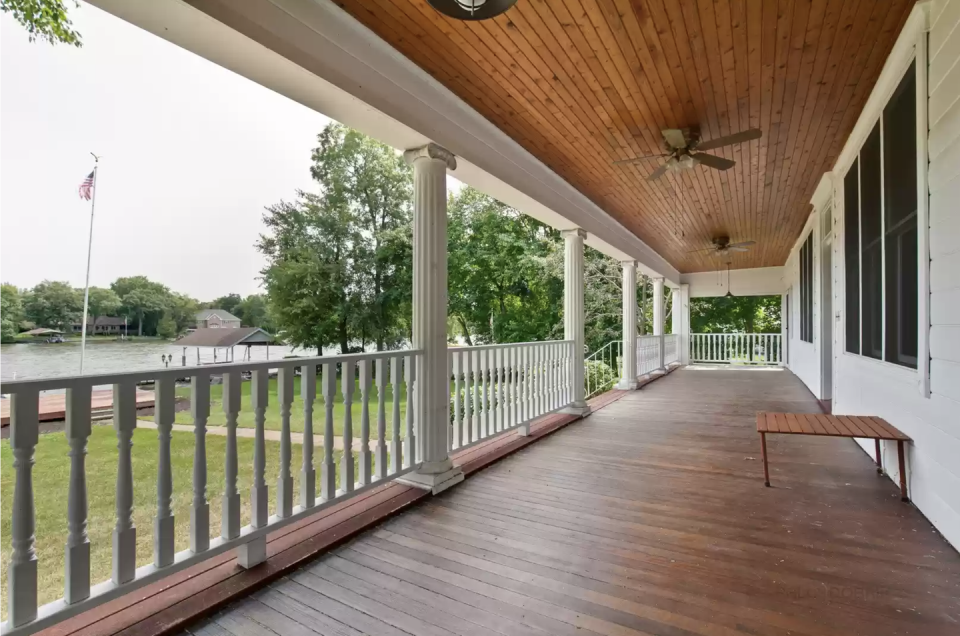
In addition to Melichar, the couple also enlisted Interior Design Partnership's Kendall Severson for finishes and furnishings. After all, there was a lot of work to be done. "The house had a lot of bad 1970s finishes from previous renovations, including vinyl sheet flooring, plastic cultured marble vanities, hollow aluminum porch columns, builder-grade cabinets, and sagging, water-damaged acoustic ceiling panels," Melichar says. "The basement was also quite creepy."
So she and her team reconfigured every inch of the home to make the floor plans functional and to take advantage of exterior views to the river. They gutted the basement, transforming it into an entertaining space complete with an arts and crafts room, game room, family room, and wine cellar; moved one of the two LaCornue-outfitted kitchens to a wing of the home that made more sense; and completely started over in the primary suite by combining bathrooms and closets and making the sleeping space a bit bigger.
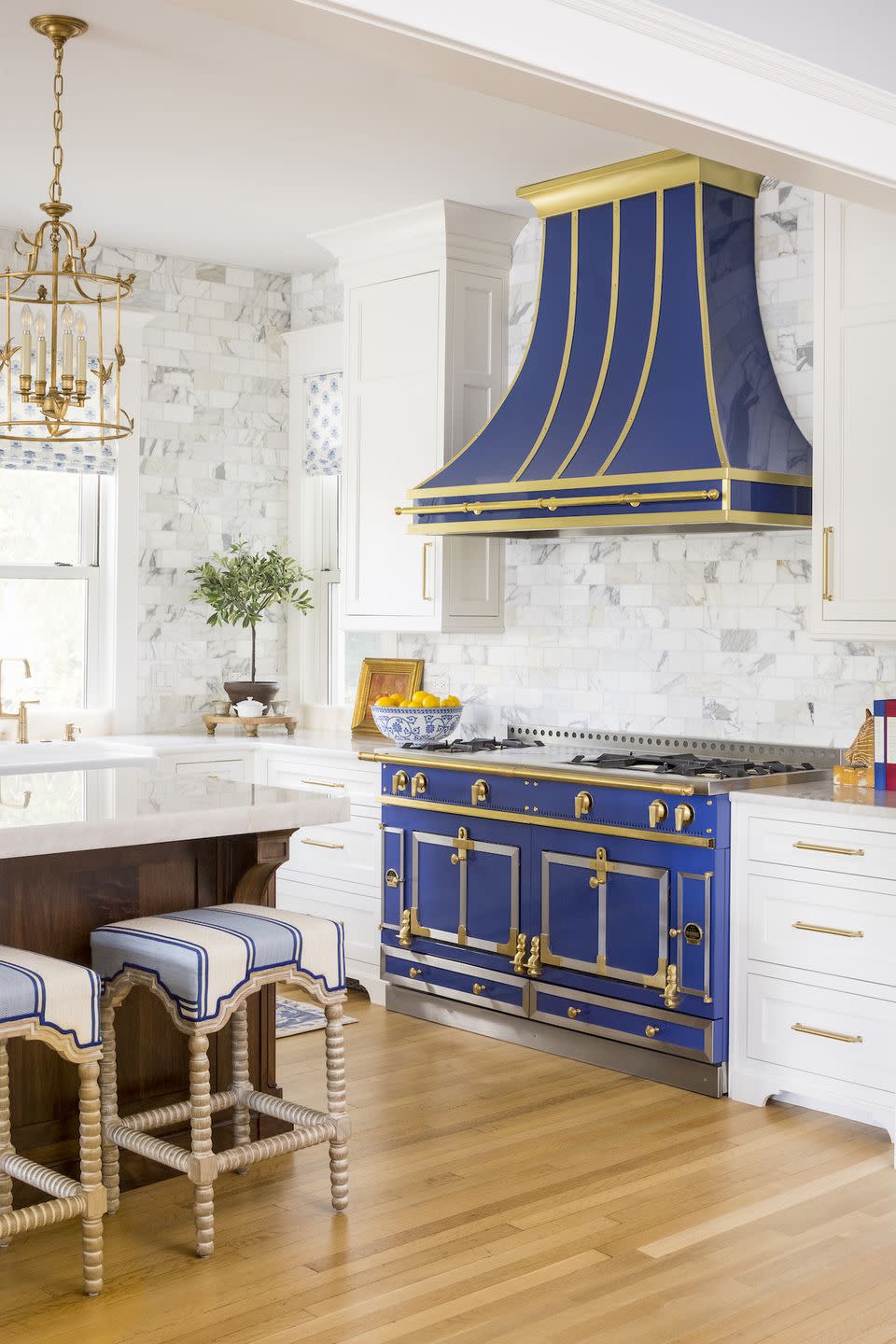
That said, she retained as much of the original character-defining features of the home as possible, including the main staircase, detailed moldings, stained glass, and millwork.
Pros: "We wanted to honor as many original elements but also wanted to make the home more functional for our young family," Knobloch says. "I love the charm of old homes and every squeak of their original hardwood floors, but I also love the conveniences of modern appliances and the luxury of a spacious bathroom."
Cons: "It was a highly emotional process for us, and each original element we were forced to discard felt like a defeat at the time," she adds. "Our incredible team navigated each unexpected discovery and turned each one into a problem-solving exercise. Instead of a roadblock, they reframed each challenge as an opportunity." As for the financial investment, Knobloch says, "While we definitely experienced spending fatigue and never would have guessed the overall price tag, we look back and recognize how the process transformed us."
Worth it? "Absolutely," she exclaims. "Our home is our retreat, and we look forward to the decades of memories we will make here. We could have never constructed the partial stone foundation or enhanced the original Victorian details, as those are priceless artifacts of a bygone era."
The Old Charmer
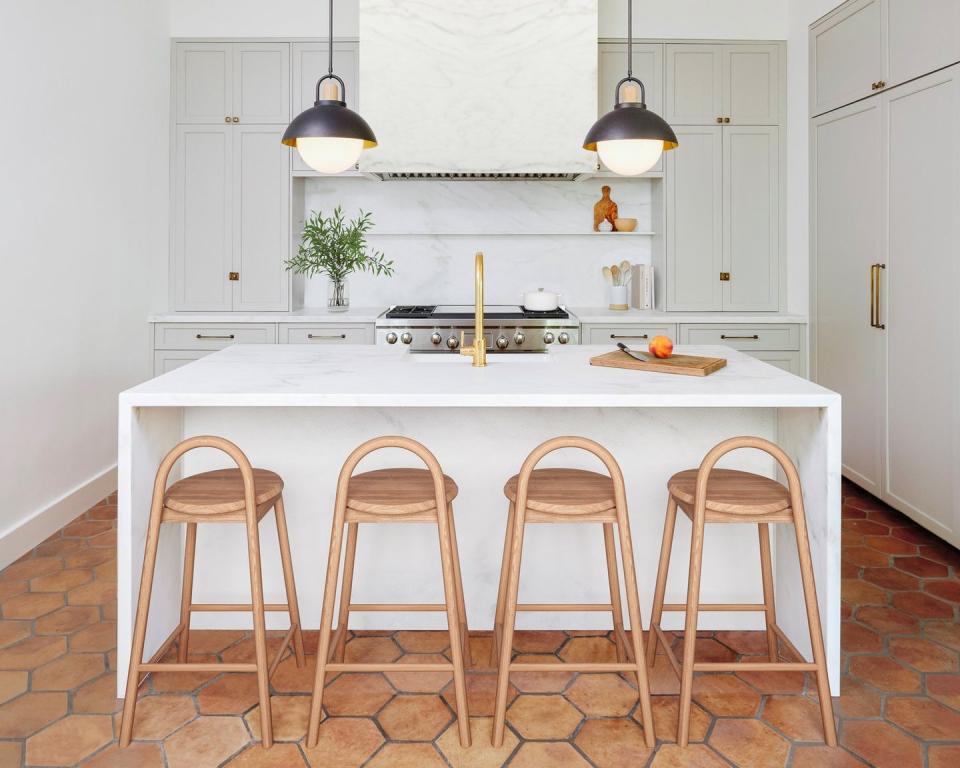
Location: Pelham, NY
Year Built: 1905
Though renovating a historic house—especially one built in 1905—comes with plenty of challenges, Lisa Schwert, founder and principal designer of Innate Studio, faced a big one: bad timing. She and her husband began their historic home's partial gut renovation in February of 2020, mere weeks before the whole world shut down. Once she was able to continue her work—supply chain delays and all—she got to work fixing up the place, from replacing the HVAC systems and electrical wiring, "which was the original knob and tube," Schwert notes. She also removed several non-load-bearing walls and a staircase to create a primary suite, reworked the kitchen's floorplan, added an entryway closet, incorporated heated tile floors, and restored the original Douglas fir hardwood floors, among other sweeping changes. "Wherever possible, we kept the existing finishes and restored original details to respect the character of the home," she explains.
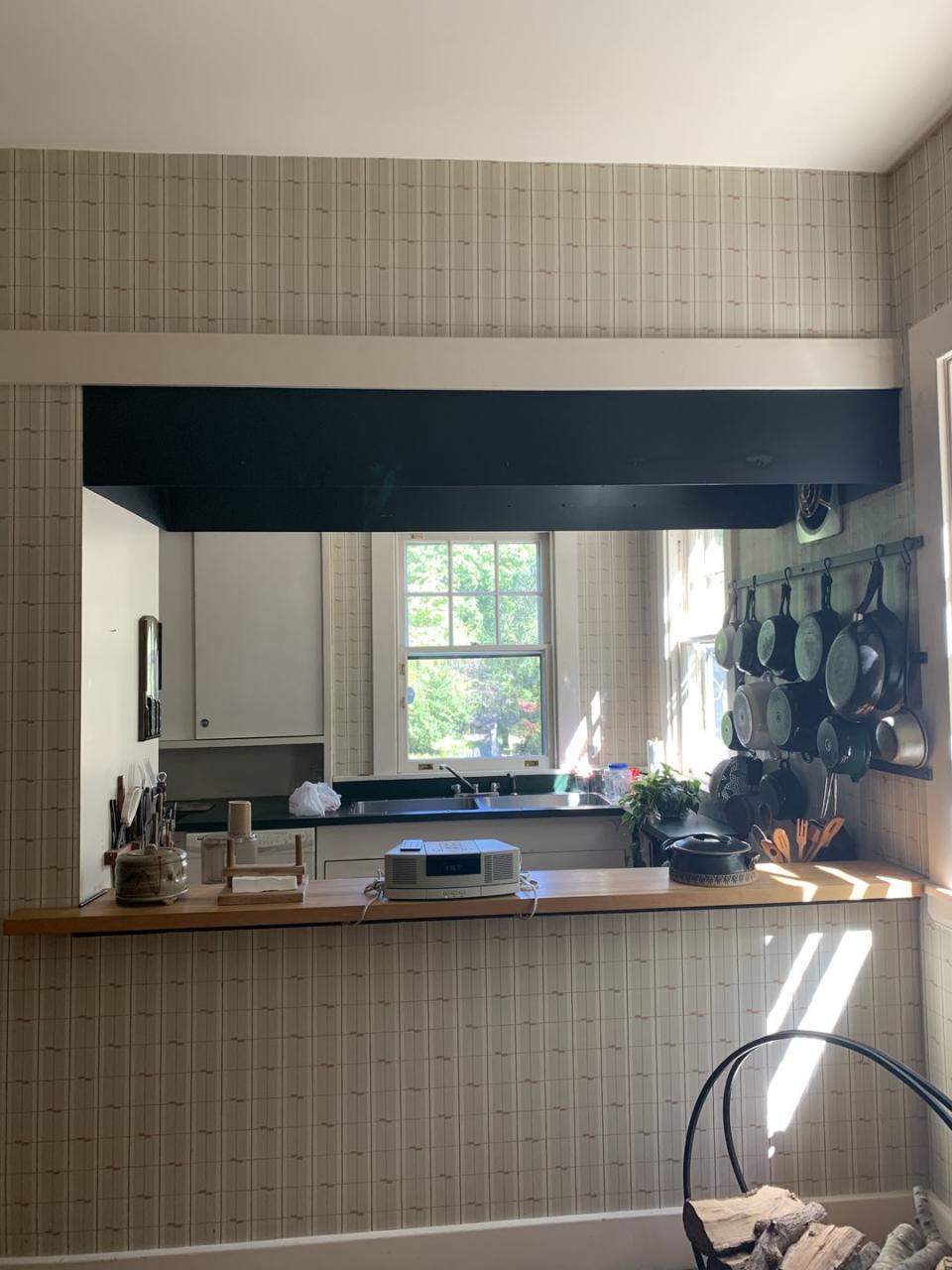
It was a successful renovation, but world events affected her and her family's plans to move into their brand-new, very old home. "As so many people did, my family completely rethought our situation during the beginning of the pandemic," Schwert says. "For numerous reasons—mostly to be closer to family and have a separate space for my mom to move into—we made the difficult decision to complete the renovation and sell the house." Not for nothing, her hard work and myriad upgrades to the home were well worth it in the resale. "We were able to recoup our costs and realize a profit that we actually used to renovate our new home," she explains.
Pros: "We were lucky that the interior of the home had been so well maintained. Being able to keep the existing flooring throughout helped with costs, added character to the home, and was less wasteful," the designer says.
Cons: Schwert explains, "This home was special because it had the most beautiful proportions and details, but aspects of the layout and property really needed to be reworked to bring it back to its original glory." Another issue she reluctantly tackled? Replacing decades-old systems. "It was expensive to have to completely redo the HVAC and electrical, but, in some ways, it was a good thing that we knew we just had to do it and didn't go down the path of trying to work with an older system only to have to start over in the middle of construction."
Worth it? "While it ended up being stressful to do the work during the early days of Covid, it was such a gratifying process and really made me realize how much I love working on single-family homes—especially older ones," Schwert admits.
So is buying a historic house worth it?
All in all, the answer seems to a resounding yes. That said, no old home is ready to move into without extensive renovations, so if you want to sashay across 100-year-old floorboards, you'll have to be willing to invest time, money, and effort into making the home appropriate and suitable for a 21st-century lifestyle. The aesthetic is just as important as the cost, so if you're not on board with one or the other, a historic house may not be for you.
Follow House Beautiful on Instagram.
You Might Also Like

